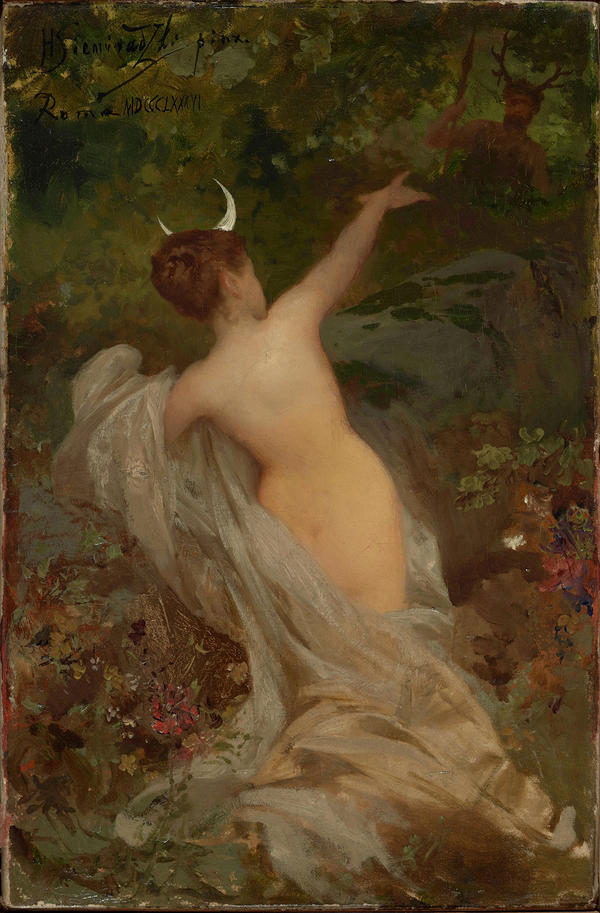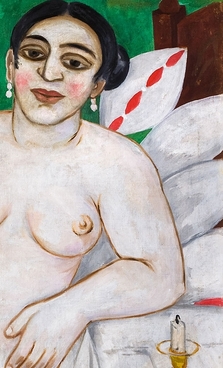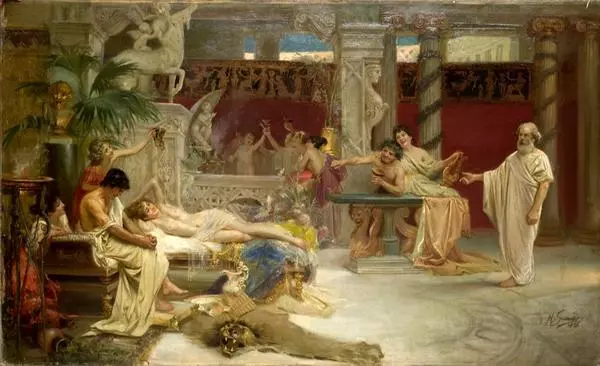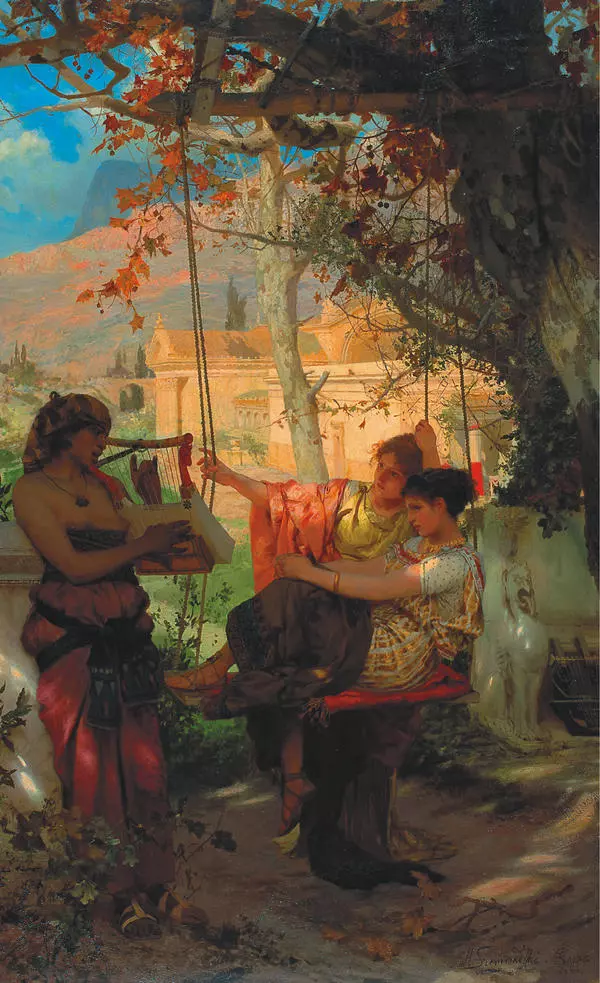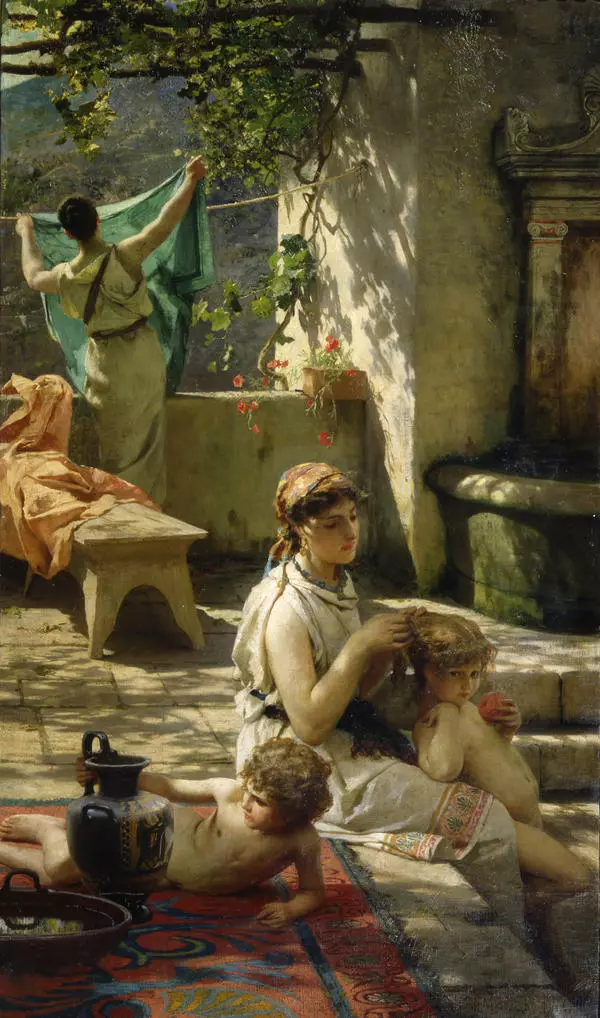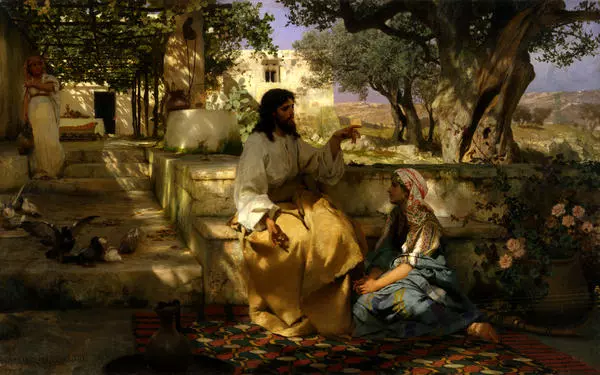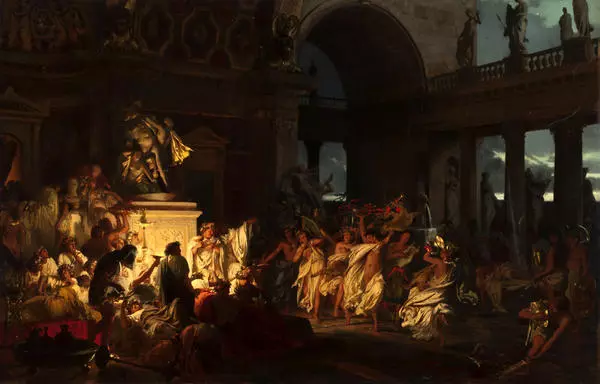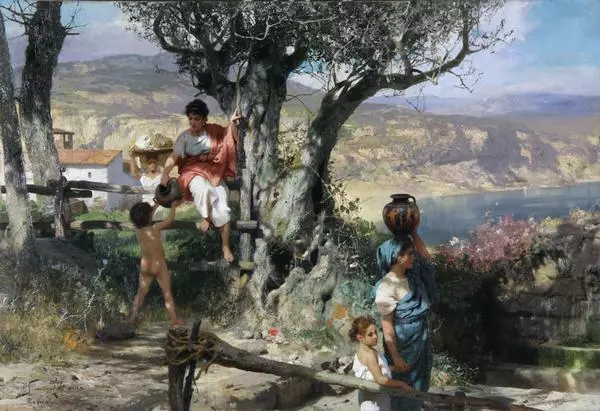Henryk Ippolitovich Siemiradzki (1843-1902) was one of the major representatives of late academicism in painting. He studied in Kharkov and St. Petersburg, but spent most of his creative life in Rome. He is famous for monumental paintings on stories from the history of ancient Greece and Rome. Siemiradzki successfully worked in the genre of chamber idyll, landscape, and portrait and was engaged in the design of theaters and private interiors. He was an academician and professor at the St. Petersburg Imperial Academy of Arts and several European academies of fine arts.
The fascination and entertaining subjects distinguish his painting. The highest heyday of Semiradsky’s work is considered the 1880-1890s, when one of his most famous works was created — “Phryne at the Poseidonia in Eleusis”. This giant canvas with more than thirty life-size figures was prepared for the World Exhibition in Paris in 1889. To write the landscape background of the canvas, Semiradsky took a trip to Greece and visited Eleusis, in which ancient mysteries were once arranged. The delighted emperor Alexander III bought this work, expressing for the first time his intention to create a museum of Russian art in St. Petersburg.
For the artist who was keen on historical painting, some genres were rather auxiliary, fulfilling the functions of a “creative laboratory”. Such are his portraits, which made it possible to practice new techniques, and served as a source for fundamental works. The “Portrait of a Young Roman Woman” of 1889 was used in the composition of “Phryne” — the model placed in the shade in the central part of the picture. For portraits, G.I.Semiradsky often chose a background with a floral pattern. The range of his models was not limited to “Greek women” and “Romans” — the artist created a number of portraits of his contemporaries, including his parents and sons. They are marked by psychologism, attention to the character, age, inner world of the depicted.
“Diana and the Huntsman” from the Yekaterinburg Museum’s collection reflects G.I.Semiradsky’s interest in antique subjects. The compositional solution is both simple and expressive. The ancient myth tells of the hunter Actaeon, who accidentally saw the bathing of the chaste goddess Artemis (Diana) — the protector of animals. Enraged, Artemis turned the unfortunate into a deer, after which he was torn to pieces by his own dogs.

